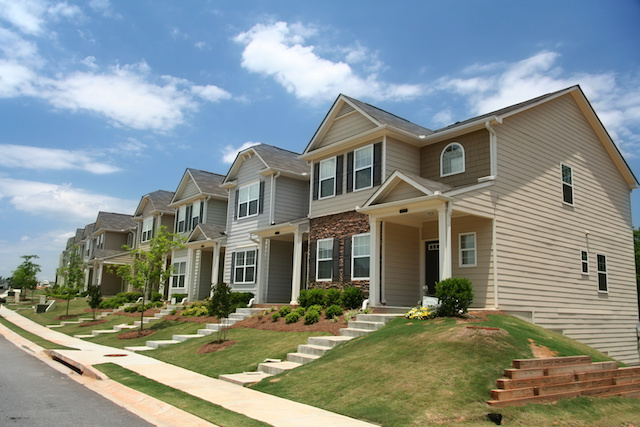Discovering the Policies and Laws of Your Condo HOA
Discovering the Policies and Laws of Your Condo HOA
Blog Article
How Condo HOA Governs Shared Spaces and Improves Community Harmony
The administration of shared areas within a condo organization plays an essential function in promoting neighborhood communication and preserving residential or commercial property values. Through the establishment of comprehensive guidelines, the Apartment HOA not only regulates the use of public amenities yet additionally promotes a society of regard and liability among locals. By resolving possible conflicts and facilitating open dialogue, the HOA can enhance the general living experience. Nevertheless, the efficiency of these methods commonly hinges on active engagement and dedication from all participants, increasing questions regarding the very best methods to achieve long-term community consistency.
Function of the HOA
The house owners organization (HOA) offers as the regulating body for condo communities, playing a critical role in preserving the building and promoting a natural living setting. It is accountable for passing and applying area rules and policies, which are created to maintain the aesthetic value and functionality of the common area. This administration makes certain that all residents follow a standard set of assumptions, cultivating a feeling of unity amongst diverse property owners.
Furthermore, the HOA takes care of the economic elements of the neighborhood, including budgeting, accumulating charges, and preserving typical locations. This monetary oversight is essential in making certain that needed maintenance and renovations are performed promptly, improving home worths gradually. The HOA also works as a liaison in between homeowners and exterior entities, such as city government and provider, resolving common issues efficiently.
Furthermore, the HOA frequently organizes area occasions and programs, motivating neighborly interactions and developing connections among residents. By facilitating open interaction and resolving grievances, the HOA contributes to an unified living setting. Therefore, its multifaceted duty is crucial in making sure the smooth operation and overall satisfaction within condo neighborhoods.
Guidelines for Shared Spaces
Reliable governance in condominium areas requires clear rules for common spaces, which are essential for keeping order and promoting a sense of area amongst residents. These guidelines act as guidelines that ensure everybody can take pleasure in common areas, such as pools, gardens, and entertainment centers, without conflict.

Moreover, sanitation and upkeep standards are vital, typically stating that homeowners must tidy up after themselves and report any problems to the home owners' organization. By clearly communicating these assumptions, the HOA can motivate and minimize his comment is here misunderstandings respect among residents.
Inevitably, distinct policies for shared rooms add to the overall top quality of life in a condominium area, allowing locals to exist together peacefully while delighting in the amenities that enhance their living experience. condo hoa.
Significance of Neighborhood Guidelines

Area standards play a considerable role in fostering a natural and considerate atmosphere within condo organizations. These guidelines establish clear expectations for citizens, promoting a sense of accountability and shared obligation. By marking appropriate habits and practices, area standards help protect against misunderstandings and disputes amongst citizens.
Additionally, these guidelines act as a structure for keeping the aesthetic and useful honesty of common rooms. They make sure that all citizens comply with standards concerning residential or commercial property maintenance, sound levels, and usage of common facilities. This uniformity not only enhances the visual allure of the community but likewise adds to general residential property worths, benefiting all property owners.

Problem Resolution Strategies
Navigating conflicts within a condominium association needs a structured strategy to make sure effective and reasonable resolution. Reliable problem resolution approaches frequently start with open interaction, urging locals to voice worries in a considerate fashion. Establishing a designated channel More Info for grievances, such as a suggestion box or an on the internet discussion forum, can promote this process.
Arbitration is one more critical strategy, wherein a neutral third celebration aids disputing citizens get to an equally you could look here acceptable solution. This approach fosters partnership and understanding, decreasing hostility - condo hoa. The HOA board should also develop clear procedures for resolving grievances, making certain all events understand the steps involved
Normal problem resolution training for board participants can boost their capacity to manage disagreements efficiently. Making use of a well-defined structure, such as the "Interest-Based Relational Strategy," helps focus discussions on rate of interests instead of placements, promoting a solutions-oriented mindset.
Advantages of Area Consistency
Promoting neighborhood consistency within a condo organization brings countless advantages that enhance the general living experience for citizens. A harmonious community urges collaboration and collaboration amongst next-door neighbors, causing a more kindly atmosphere. When citizens feel respected and connected, they are a lot more likely to engage in public activities and join decision-making procedures, causing a stronger feeling of belonging.
In addition, neighborhood consistency dramatically minimizes misconceptions and disputes, which can otherwise interrupt day-to-day live. A serene environment reduces stress and promotes mental health, allowing locals to enjoy their homes totally. In addition, unified partnerships often convert into increased residential or commercial property values, as potential purchasers are drawn to neighborhoods characterized by stability and collaboration.

Verdict
Via the facility of clear regulations and neighborhood standards, homeowners are motivated to maintain a answerable and considerate setting. Inevitably, the initiatives of the HOA add to a cohesive community, promoting both building worths and general resident fulfillment.
Furthermore, the HOA often arranges area events and programs, urging neighborly interactions and developing partnerships amongst residents. By marking acceptable behaviors and practices, area standards assist prevent misconceptions and disputes among locals.
In addition, community guidelines assist in efficient interaction amongst homeowners and the Homeowners Association (HOA) Via the facility of clear rules and neighborhood standards, residents are motivated to keep a responsible and considerate setting. Inevitably, the efforts of the HOA add to a cohesive neighborhood, advertising both residential property worths and general resident complete satisfaction.
Report this page